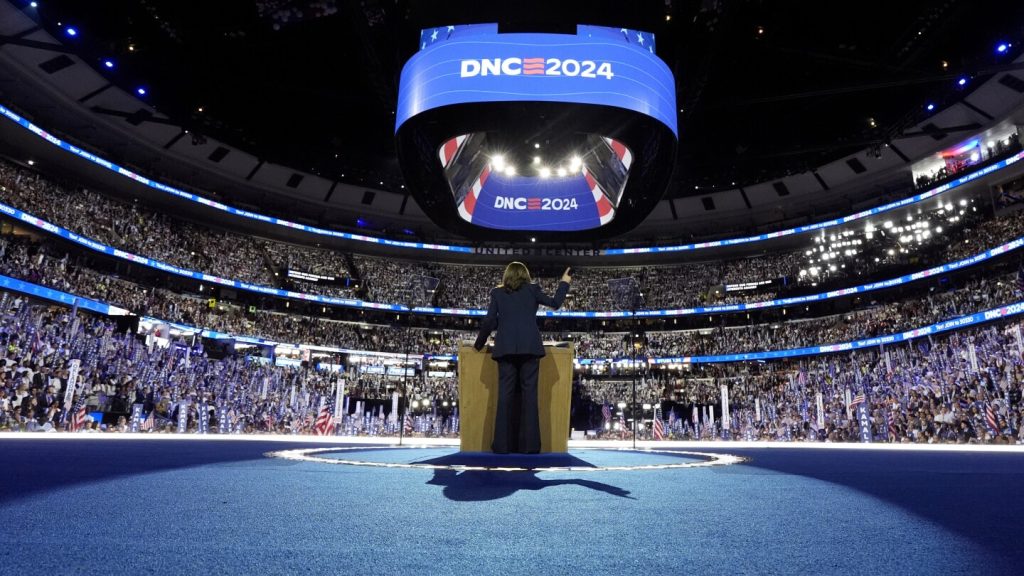In a closely contested election campaign, both the Democrats and Republicans are looking for any advantage they can get. One seemingly important factor is the popularity of their midsummer conventions, which can be indicative of their overall success. However, historically speaking, the party with the most popular convention does not always win in November. Despite this, the Democrats seem to have a slight edge this year, with Vice President Kamala Harris’ party averaging 22 million viewers compared to the Republicans’ average of 19.1 million.
TV ratings for political conventions do not always translate to success in the actual election. While the Democrats have been more popular with viewers in 13 of the past 17 presidential election year summers, this does not always translate to victory in November. In fact, of the eight times the party with the most popular convention went on to win the election, there have also been eight instances where they lost. The last time a party lost despite having a more popular convention was in 2016, when Democrat Hillary Clinton narrowly beat Donald Trump in TV ratings.
On the final night of the conventions, where the nominee gives their acceptance speech, viewership tends to peak. Despite his popularity as a television attraction, Donald Trump fell short in convention ratings three times, with his July speech reaching 25.4 million viewers. Meanwhile, Kamala Harris’ shorter speech reached 26.2 million viewers, indicating a stronger interest among viewers in the Democratic convention this year. It will be interesting to see if this boost in viewership translates to success in the November election.
Typically, people are more likely to watch their own party’s convention, reflecting their political leanings. This can be seen in the ratings this year, with Fox News Channel, appealing to Republicans, having more viewers than any other network during the GOP convention, while left-leaning MSNBC dominated during the Democratic convention. This trend has been observed in previous election cycles, with viewers gravitating towards their preferred party’s convention. However, star power can also play a role in attracting viewers, as rumors of surprise appearances by celebrities like Beyoncé and Taylor Swift added to the excitement of the Democratic convention.
Both Democratic and Republican conventions are highly produced television events that serve as much as political meetings as they are entertainment shows. Veteran journalist Jeff Greenfield noted that the Democrats had the upper hand in terms of entertainment value this year. With notable figures like Oprah Winfrey and Stevie Wonder participating in the Democratic convention, the event seemed to have more star power compared to the Republican convention, which featured artists like Kid Rock and Hulk Hogan. It remains to be seen how these factors will impact the outcome of the election in November.
As the 2024 election approaches, it will be important to consider these historical trends in convention viewership and how they correlate to election outcomes. While TV ratings can provide some insights into the popularity of each party’s message and candidates, they do not always determine the ultimate success on Election Day. The 2020 election will be a test of whether the Democrats’ advantage in viewership during their convention will translate into votes in November.


